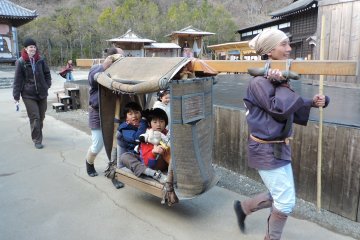
Nikko Edo Wonderland
Stacy Kurokawa"The only place to experience living history and culture of Edo period Japan,” boasts the brochure. “Watch out, folks!” it continues, “It’s real live action. Ninjas sneak all around you."

Edo Wonderland Nikko Edomura is a Japanese cultural theme park in the Kinugawa Onsen area of Nikko, Tochigi. The park resurrects and showcases the life and culture of the Edo period. Edo Wonderland spans a site area of 122.3 acres. The park's design is based on the Edo period's golden era known as Genroku. [Wikipedia]

"The only place to experience living history and culture of Edo period Japan,” boasts the brochure. “Watch out, folks!” it continues, “It’s real live action. Ninjas sneak all around you."

Travel 400 years back in time and discover the secrets of Edo by becoming one of its citizens! Visit Edo Wonderland in Nikko.
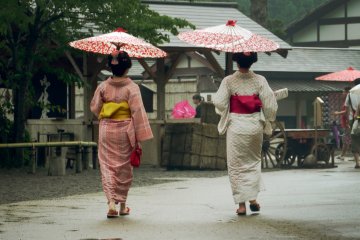
Edo Wonderland is a historic theme park that recreates the atmosphere of a typical Edo period (1603 and 1868) town and offers various exciting shows in Nikko.

The wonderful town going back to the Edo period is a sight that must be experienced by any visitors to Japan. You will be able to enjoy the atmosphere as well as the sights and sounds of the village, including the denizens living there as well as various shows.

Edo Wonder Night is coming to Tochigi’s Edo Wonderland theme park across four special nights this October and November. By day, Edo Wonderland Nikko Edomura is already known for its authentic recreation of bustling town life in the Edo period (1603–1867), bringing together samurai, ninja, kimono and much more for an extraordinary experience and memorable evening in Nikko, Tochigi prefecture. Edo Wonder Night dates: October 19th (Sat) & 26th (Sat November 9th (Sat) & 16th (Sat) [photo id='239578'] As the sun goes down this autumn, expect this Edo-period setting to truly come alive with illuminated streets, evening performances (including fireworks) and traditional activities to enjoy. Stroll Edo Wonderland’s streets and alleyways while enjoying festival food, like grilled pike, from the yatai stalls or people-watching the passersby. Look out for everything from oiran (geisha-style courtesans in flamboyant kimono wear) to Kabuki actors. [photo id='239579'] In fact, special guests will be appearing each night to entertain the crowds with traditional performances like Kyogen, traditional dance, katsuben-style narration and more. It’s a real chance to watch and appreciate some of Japan’s more treasured and unique culture and artforms that are typically harder to see. Watch the graceful movements of skilled dancers or gaze at the heroic acrobatics of ladder-riding Edo firemen — check the official site for the schedule which performers will attend on which day. [photo id='239580'] Try a traditional experience, like exploring the inside of a gambling hall where dice games like Cho-han (‘even-odd’) may have been played on tatami flooring. Watch a master swordsmith and iaido practitioner demonstrate their incredible skill and razor-sharp technique with a tatami-cutting performance, or catch a special evening rendition at the Ninja Theater, where dynamic sword battles and fast-paced martial arts play out in front of your very eyes. What you need to know Edo Wonder Night extends the park’s normal 5pm closing time to 8pm, and attendance is included in the price of the regular park ticket (both one-day and afternoon types). Fireworks are planned for 6:20pm on each of the days, and special lodging/trip plans will be announced on the official website closer to the event. Shuttle buses are being planned to help transport visitors back to local stations or lodging areas, like Kinugawa Onsen or Nikko Station. Catch a sneak peek:
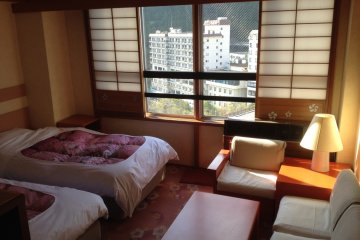
With several hot springs, meals included, a ramen shop, and beautiful rooms, the Kinugawa Park Hotel is an exercise in luxury and relaxation.
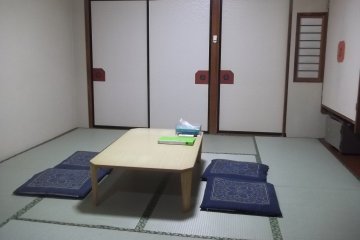
In the spa town of Kinugawa Onsen, close to Nikko in northern Japan's Tochigi prefecture, Kashobou Fukumatsu is a faded but friendly and affordable place to stay.

The Kinugawa Onsen Sanraku Hotel is a high-grade nouveau-style onsen perched on the banks of the Kinugawa river. Steaming onsen, delicious Franco-Japonaise evening cuisine, verdant mountain views, and delightful back streets to wander around in your kimono. Basically the quinessential onsen experience.
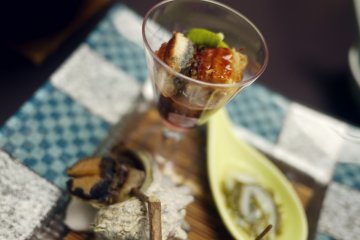
Kinugawa Park Hotels is a luxurious hotel located in Kinugawa Onsen Station (Japanese hot springs vacation area) and is about two hours away from Tokyo. It is an ideal place to visit if you need to take a small break from the hectic rhythm of the city. Along with its incredible collection of bathing facilities, which come in all shapes and styles, and the comfortable and luxurious rooms, they also offer you the unique opportunity to taste traditional food of the highest quality.
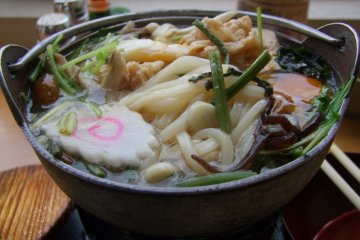
Yuba is a delicious food famously coming from Nikko in Tochigi Prefecture. Yuba is tasty, healthy, and can be cooked in a seemingly uncountable number of ways.

There is an excellent restaurant specializing in eel in Nikko called Sawamoto. In fact, their broiled eel is the best I have ever had.
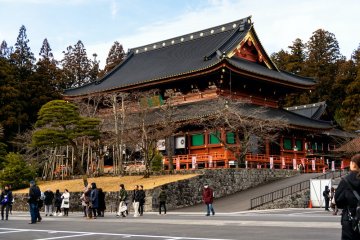
Among Nikko’s many world-renowned temples, stands the vibrantly colored Rinnoji (輪王寺), which was designated as a UNESCO World Heritage Site in 1999. Shodo Shonin, a Buddhist monk credited for introducing Buddhism to Nikko, founded the temple in the eight century. Lush forests and the mountainous landscapes of Mount Nantai, Nyoho, and Taro surround the collection of buildings, creating an atmosphere of sacred solitude. Many notable Buddhist figures were drawn to the temple’s pious isolation, including Kukai, the founder of the Shingon School of Buddhism, and Enjin, a priest of the Tendai School of Buddhism.

The Nikko Toshogu Shrine is arguably one of the most important religious sites in Japan and is located in the forests of Tochigi Prefecture. The shrine is the final resting place of Tokugawa Ieyasu, the samurai leader who united Japan in the early 1600s and the first ruler of the Tokugawa shogunate of the same name, which ruled Japan for over 250 years until 1868. Originally a relatively simple mausoleum, Toshogu was expanded in the first half of the 16th century by Ieyasu's grandson Iemitsu to create the spectacular complex that can be visited today. The shrine complex consists of more than a dozen buildings, which have been refined with countless wood carvings and large amounts of gold leaf. This is very unusual as there is usually an emphasis on simplicity in shrine architecture. Toshogu contains both Shinto and Buddhist elements. The wood carving of the monkeys who see no evil, speak no evil, and hear no evil is best known.

1/25 scale of some of the worlds most interesting and historic structures. Very detailed with over one million hand painted people, as well as vehicles, plants and water to make the scenes look lifelike.